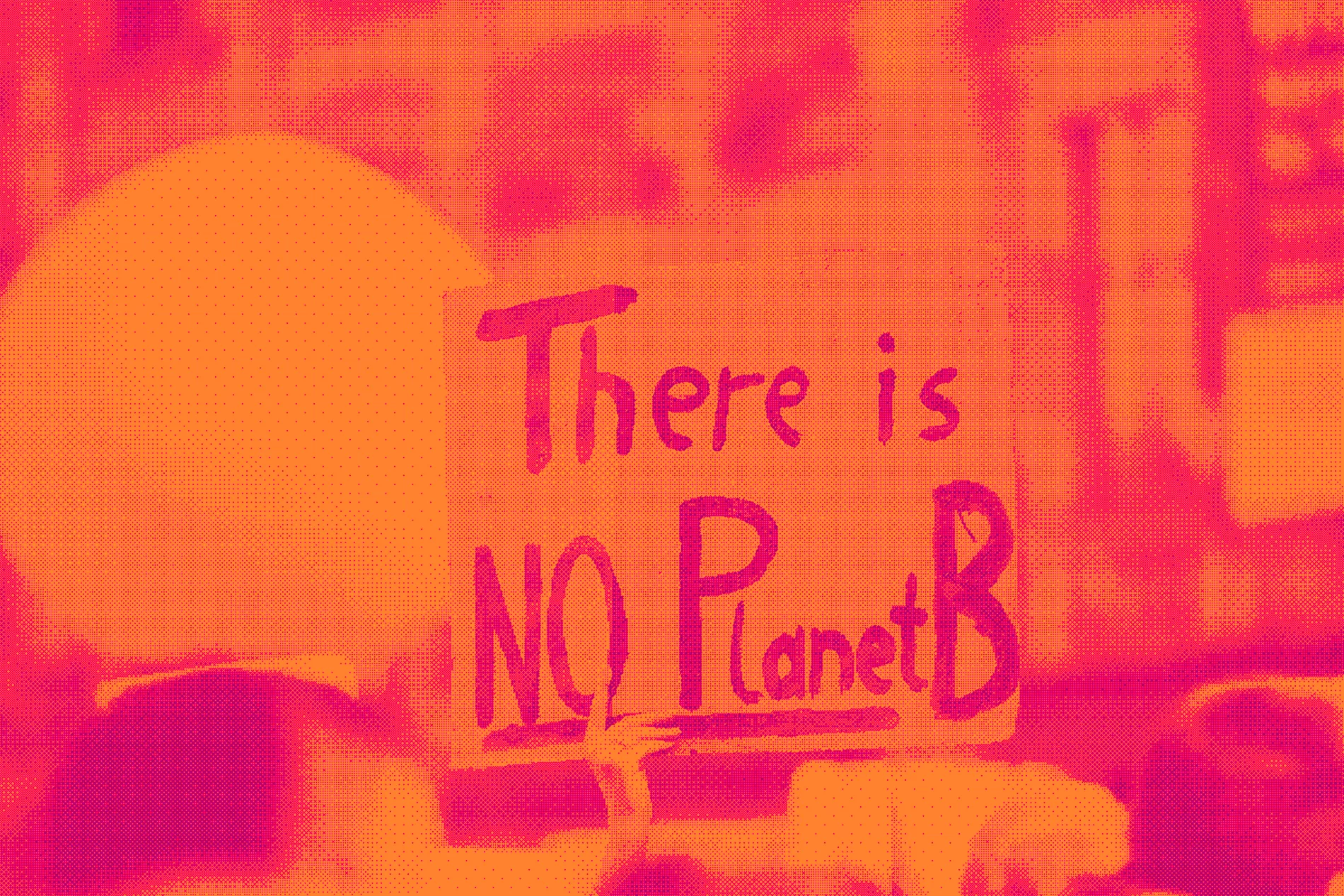Designing for tomorrow, and tomorrow, and tomorrow
On cathedral thinking
by Veronica Pelazzini

Artwork by MAIZE
In the High Middle Ages, Chartres, located in northwestern France, gained prominence as a notable center of French philosophy, where philosophers began to assert that progress comes from the patient collaboration of generations dedicated to the pursuit of knowledge over time. Attributed to Bernard of Chartres, it is the idea of standing on the shoulders of giants.
The city’s cathedral is one of the most important masterpieces of gothic architecture, a structure whose history unfolded amidst ruinous fires and intellectual fervor, and that has held UNESCO World Heritage status since 1979. In addition to being at the center of the cultural moment known as the 12th-century Renaissance, Chartres cathedral is one of countless examples of colossal projects that took an enormous amount of time and effort to complete. The construction of the cathedral began around 1145 and continued over many decades; however, it was rebuilt after being severely damaged by fires, most notably by a particularly destructive one in 1194. In a display of perseverance and craftsmanship, the cathedral was continually rebuilt, and the dominant form we see today dates primarily from the 13th century.
This is clearly not the approach we adopt nowadays. The idea of devoting decades or even centuries to the construction of a monument — nor of anything else — seems bizarre and unproductive: our society craves immediate results, seeking tangible and quickly attainable benefits for every effort it makes. This trend reflects a paradigm in which tactics triumph over strategy. We continuously search for the most immediate, rapid gains, and if they require minimal effort to achieve, so much the better. Given this context, would it still make sense to set long-term goals that require decades of foresight and planning so that future generations can enjoy their full realization?
Would it make sense, today, to build a cathedral?
“Cathedral thinking” refers to the undertaking of long-term projects or goals that are initiated for the benefit of future generations and are destined to be completed long after the original visionaries and builders are gone. This label represents the creation of something that inherently requires more time than those who design it could ever hope to experience themselves: that is, a way of planning that benefits not the designers but those who will come after them.
This mindset can be integrated into personal goals, organizational strategies, and societal visions. It is worth reflecting on the motivations that drove cathedral projects in the past: what are the underlying principles? and can we translate them into a design ethos that resonates with our dynamic and fast-paced contemporary world?
The main ingredient seems to be purpose. Even though it can take different shapes, it is always a purpose that guides actions, visions, and strategies: a strong goal, that in the 12th century would have been divine salvation and the hope of redeeming one’s sacrifices in the hereafter, or the desire to showcase the wealth of the Church. Today, that sense of meaningfulness has to shift into something different.
In the 12th century, Bernard of Chartres claimed that we possess a broader view of the world compared to those who came before us not because our vision is sharper but because we build upon their achievements. This sensitivity to the past complements the notion of cathedral thinking, the principles of which are central to the discipline of intergenerational ethics. Indeed, one of the preeminent issues addressed by intergenerational ethics is how present actions and decisions affect the well-being and interests not only of the present generation, but also of those who will come after us. Indeed, our actions can potentially have an enormous impact on future generations, affecting not only who those people will be and how they will live, but also whether there will be future people at all.
Cathedral thinking and deforestation
Throughout history, many industrial and agricultural practices have favored immediate economic gain at the expense of long-term environmental sustainability: activities such as deforestation, overfishing, or the burning of fossil fuels are examples of actions that have damaged Earth’s ecosystems and played a significant role in climate change.
One of the most striking examples is the Amazon rainforest. The Amazon rainforest has a crucial cooling effect on the planet, plays a critical role in capturing and storing carbon dioxide from the air, and serves as a habitat for an astonishing array of species. However, long-term thinking has been neglected in several ways: in the 1960s, large-scale deforestation began in the Brazilian Amazon, and in the last fifty years, about 20 percent of the Amazon has been lost. Some scientists estimate that the tipping point, the point at which the forest’s tropical climate begins to dry out, is in the range of 20% to 25% deforestation.
Who pays the price for a mindset that leaves no room for long-term thinking? The lack of cathedral thinking threatens not only the system’s wellness and the current relationship between the environment and animals but also jeopardizes the well-being of future generations. Let’s not forget the relationship between us and future generations is asymmetrical: we hold the power to determine the quality of their life while, on the other hand, people who do not exist yet don’t have any possibility to share their needs, wishes, or expectations with us.

Artwork by MAIZE
Deforestation in the Amazon has severe consequences not only for future generations but also for the indigenous communities that suffer from this ecological crisis, highlighting the glaring injustices and environmental irresponsibility that continue in the name of economic development and resource exploitation. Indigenous communities in the Amazon face displacement from their traditional territories, loss of cultural heritage, and erosion of their sustainable livelihoods as illegal logging, mining, and agribusiness continue encroaching on their lands. Moreover, the exploitation of the Amazon disproportionately affects these vulnerable communities because they are heavily dependent on the forest: deforestation disrupts their delicate balance with nature, leading to displacement and land conflicts, not to mention loss of life.
"At first I thought I was fighting to save rubber trees, then I thought I was fighting to save the Amazon Rainforest. Now I realize I am fighting for humanity" - Chico Mendes
This is not an isolated case, though. Even younger generations living in countries not directly affected by massive deforestation are beginning to question government policies to combat climate change. Recently, the European Court of Human Rights opened a case on climate inaction. It was filed against 32 countries by applicants between the ages of 11 and 24, accusing their countries of failing to reduce their emissions enough to hit the Paris Agreement target, which required to limit global warming to 1.5° C. The young applicants, as well as many others, claim that they are being significantly impacted by extreme heat, causing physical as well as mental distress, suffering from both eco-anxiety and respiratory conditions, and reporting worries on the aspect that what they consider home will look like. What remains to be demonstrated is that inadequate climate targets are directly responsible for the rapidly deteriorating quality of life of young people: yet what they are asking for is a livable future, threatened by global warming, that knows no borders.
Strategic design as a form of long-term thinking
The notions of purpose, responsibility, and long-term thinking are the strong core of cathedral thinking and intergenerational ethics; when these elements were lacking, the catastrophes we have mentioned became a reality for some people. How could we, as people and as organizations made up of people, incorporate the strategic approach that cathedral thinking embodies into our actions? A possible answer is to consider responsibility and long-term thinking as the two aspects we can focus on to evaluate the complex systems in which we move and act. In doing so, the new cathedral, the new purpose that we as a society could embrace in this reckless 21st century, is that of “system’s wellness”. A system in which the environment and both human and non-human animals live and interact together. The approach that better translates this concept into action seems to be that of strategic design, the linchpin that bridges cathedral thinking with practical action. Strategic design is precisely about designing not only (and not necessarily) for immediate profit, but also for long-term consequences, always keeping in mind environmental and social challenges. It recognizes the intricate interplay between different components of a problem or project, and how a change in one part can ripple through the entire system.
Strategic design is inherently forward-looking, encouraging us to consider the lasting impact of our decisions and actions. By assessing potential consequences, both intended and unintended, strategic design helps to avoid short-sighted decisions that may jeopardize the well-being of future generations. It also promotes continuous learning and improvement through feedback loops, allowing projects, and therefore our actions, to remain relevant in changing circumstances.
The commitment to creating something lasting compelled designers back in the day to lay the groundwork for the benefit of generations to come, and this strategic approach is what we can strive for too when designing for tomorrow (and tomorrow, and tomorrow).


